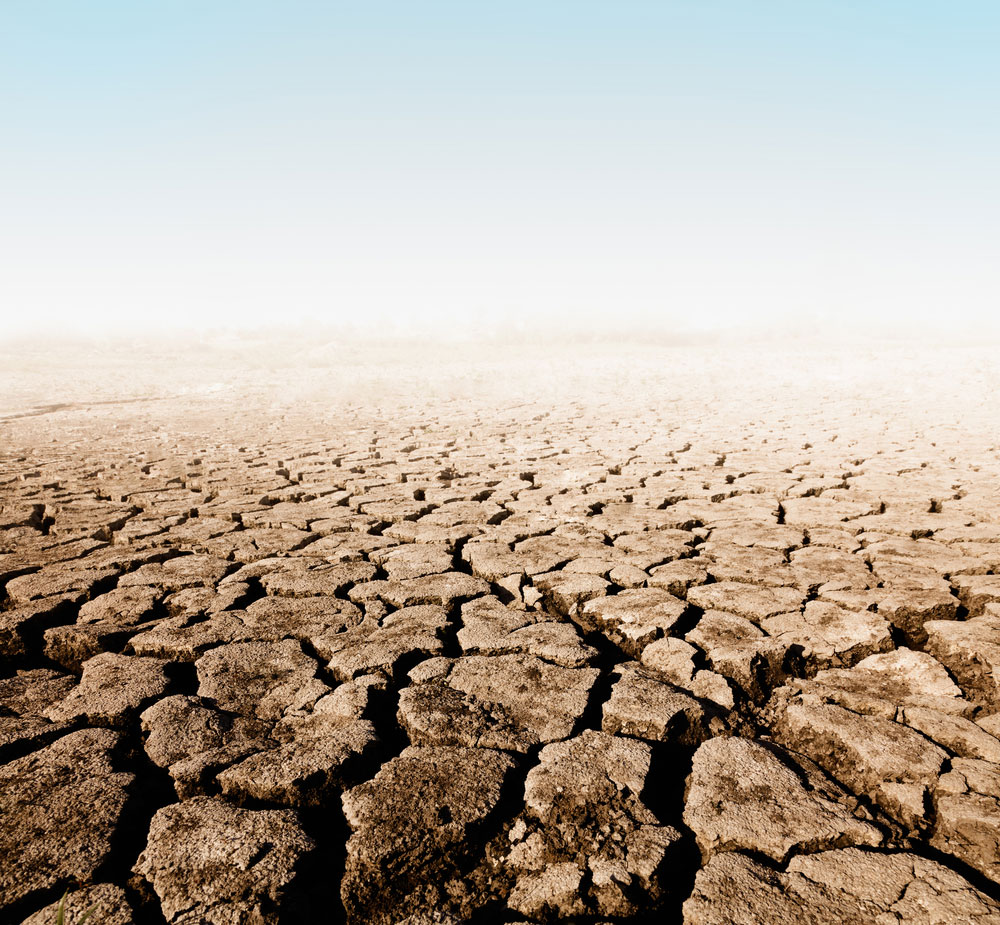Shipping Snow: Could Eastern Water Ease Western Drought?

In the long history of water wars fought in America's arid West, some proposed solutions stand out for their sheer wackiness: towing icebergs from the Arctic to California, then capturing the meltwater. Or using enormous nylon bags, filled with plentiful Alaskan water, to quench the Southwest's thirst. Or shipping snow and ice from states shivering under a blanket of snow to sun-baked desert climes.
After the laughter died down, these and dozens of other wildly ambitious geo-engineering projects were quietly shelved in administrative offices all around the West, where they've been gathering dust ever since.
But with California, Oregon, Nevada and other western states reeling under a record-breaking drought, a few engineers and water policy experts are blowing the dust off these old plans and looking at pipelines, canals, dams — virtually any proposal that might break the vise-like grip the drought now has on the western United States. [What If? 22 Crazy Hypothetical Questions (and their Answers)]
'A current crisis'
There's no denying that the current drought has reached devastating proportions: The California Department of Water Resources reports that many lakes and reservoirs are less than 40 percent full. The snowpack in the Oregon Cascade Mountains is just 18 to 22 percent of normal.
Many cities on the California coast received less rain in 2013 than Death Valley, historically the driest place in North America. And, alarmingly, the typical rainy season in California ends in March, just a few weeks away. [Photos: The 10 Driest Places on Earth]
"This isn't a coming crisis," Mark Cowin, director of the California Department of Water Resources, told BusinessWeek. "This isn’t an evolving crisis. This is a current crisis."
Get the world’s most fascinating discoveries delivered straight to your inbox.
Meanwhile, the Northeast has the opposite problem: Boston is 8 inches (20 cm) ahead of its average snowfall for this time of year, according to the National Weather Service, and New York City has 23 inches (58 cm) more snow than usual.
Shipping water south
In a response that some critics are calling desperate, California Gov. Jerry Brown and other officials are proposing two 30-mile-long (48 kilometers) underground pipelines to route water from Northern California to cities and farms farther south through the existing State Water Project canals and the Central Valley Project network, at a cost of about $15 billion.
As is often the case in California water wars, Brown's proposal has pitted the state's mighty agricultural sector against fervent environmentalists, and coastal cities against inland residents.
"The governor's tunnels are based on flawed and outdated assumptions that there is 'surplus' water to export," Barbara Barrigan-Parrilla, executive director of Restore the Delta, a group opposing the plan, told BusinessWeek. "We have had three dry years in a row and the governor admits the tunnels won't add one drop of water to our drought-plagued state."
'You can't build more water'
When it comes to ambitious geo-engineering projects, California has plenty of company. In recent decades, as states like Colorado and Arizona have witnessed huge increases in population, their state officials have cast a covetous eye over the water flowing through waterways farther east.
A project named the "Missouri River Reuse Project" has been proposed by officials in Colorado and in the U.S. Department of Reclamation. The plan would divert water from the Missouri River — which normally flows into the Mississippi River and out to the Gulf of Mexico — through an enormous pipeline slicing some 600 miles (970 km) across Kansas wheat fields to the Front Range of the Colorado Rockies.
Even if the multibillion-dollar costs of such a project could be ignored, conservationists wasted no time in dog-piling on the Missouri River Reuse Project's environmental impact.
"Huge pipelines aren't solutions to the fundamental problem that we are using more water than we can sustain. You can't build more water," Drew Beckwith, water policy manager for Western Resource Advocates, told the Denver Post. "We need to work together on conservation and reuse strategies that can have an immediate positive impact."
Seeking cost-effective solutions
For sheer geo-engineering moxie, however, few projects can rival the immensity of the proposed Alaskan Subsea Pipeline. The 1,400-mile-long (2,253 km) pipeline would gather fresh water from southeast Alaskan rivers, then plunge into the Pacific Ocean, past the shoreline of British Columbia, Washington and Oregon, and finally inland to Lake Shasta in Northern California.
In 1992, the U.S. Office of Technology Assessment (OTA) released an analysis of the Alaskan Subsea Pipeline that also examined other options for slaking the thirst of California. Like most grandiose geo-engineering projects, the pipeline fell flat under rigorous cost-benefit analysis.
The OTA report concluded that "the water delivered by this pipeline would be much more expensive than any of the other options currently being considered or implemented by State [of California] and regional water authorities."
Indeed, many of the other options recommended by the OTA report — conservation, water banking (storing surplus water in wet years) and charging more realistic prices for water — lack the excitement that mammoth geo-engineering projects tend to generate. Nonetheless, for drought-parched states looking for real-world solutions to immediate problems, boring-but-practical solutions may be all they have available.
Follow Marc Lallanilla on Twitter and Google+. Follow us @livescience, Facebook & Google+. Original article on Live Science.



